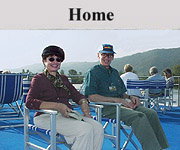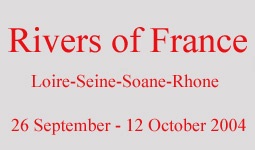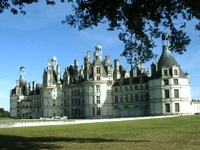Saturday, October 9. The
ship reached Avignon about 8:00 a.m. Because the silt of centuries has formed a
long, narrow island in the Rhone, the river has two channels there. To get to
its mooring, the ship had to sail south through Avignon in one channel, then
north up the other channel. But as a special treat for the passengers, the Ravel
continued past the mooring and approached the old Saint Benezet bridge,
immortalized by the French song "Sur le Pont d'Avignon." The present bridge
dates from the late 13th century and originally had 22 arches. Most of it was
destroyed in a flood in 1660, and only four arches remain. Then the ship turned back downstream and docked at about 8:40. There was a walking tour of the city at 9:00. We entered the Porte de l'Oulle into Place Crillon. We wound through the old streets and eventually came to a large theater and, in front of the theater, Place de l'Horloge, the main square. Finally we arrived at the Papal Palace (1335-1353). Residence of seven popes and two anti-popes over nearly a century (1309-1403), it is the largest Gothic palace in the world. Soon after Clement V, a Frenchman, was chosen as Pope, King Philip IV of France convinced him to move the papal residence to Avignon (not then a part of France). A succession of popes sympathetic to the French crown followed, and the papal residence remained at Avignon until 1376 when Pope Gregory XI restored the papacy to Rome. When he died in 1378, there was a dispute over his
succession. The Cardinals in Rome elected Urban VI to replace him, but another
council in France elected Clement VII. For several decades, the competing
colleges elected competing popes. The two popes elected in Avignon during this
period are often referred to as "anti-popes."
Copyright © 2000-2023 DarrellPeck.com All rights
reserved. | |||


